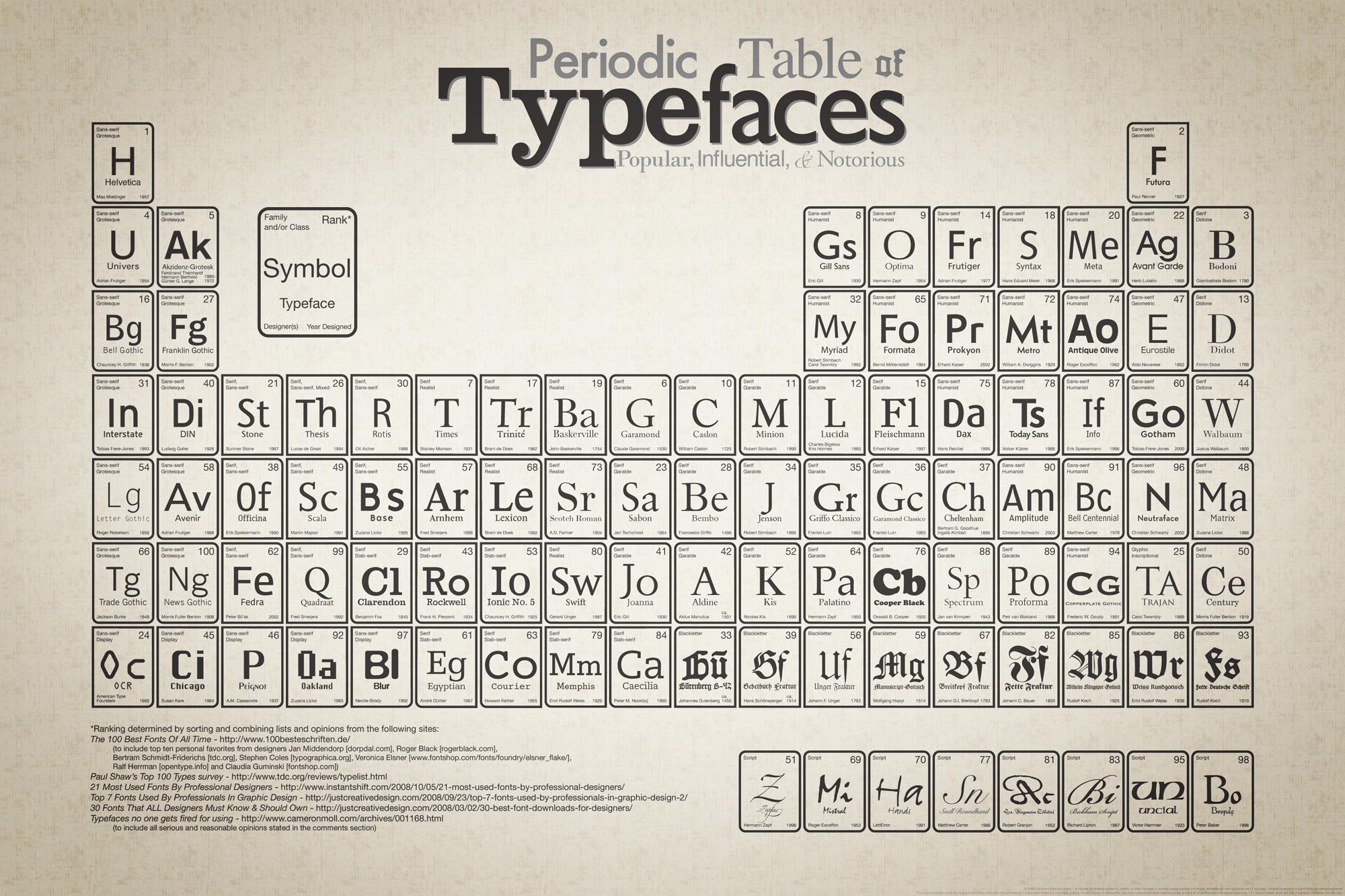One of the toughest jobs for in-house designers is choosing fonts. From the company logo (visible on all digital and print copy as well as signage) to copy on the website, it’s important to think carefully about the font you use to reflect your brand’s identity and establish a recognisable look.
Designers are fairly limited when it comes to web copy; you should set a fairly standard font so that it can be displayed by all browsers.
However, when it comes to print and graphic design you are free to play around with typography and can experiment with different typefaces or even create your own!

Periodic Table of Typefaces. Click for the full size version.
You can make small adjustments to a basic font (Arial, Helvetica, Tahoma etc.), download somebody else’s custom font from one of the many free font sites (check for commercial licensing first!) or even create your own custom typography.
As a branding tool, custom typography is the ideal solution. Customers will easily recognise media that belongs to you. Some people draw the line at creating custom text for just their business logo, but we recommend going a step further and creating an entire custom typeset.
You may need to hire in a typography expert but the tools are available for anybody to have a go using Adobe Illustrator. After attending our Illustrator workshop you will have all the skills needed to start creating your own typefaces, although we don’t cover typography in detail on the course. If this is something you are interested in learning we can tailor our courses to your requirements.
Once you have created your custom font, you can then use it in Photoshop & InDesign when editing and creating graphics for your web and print materials.
So why should you spend time and resources creating a custom typeset for your business? Here are my top 4 reasons!
Aaron Charlie
27 Jun 2012
As we always make clear on our PRINCE2® training, PRINCE2 is a toolkit. Whilst you need to learn the whole toolkit to pass your PRINCE2 Foundation or PRINCE2 Practitioner exam, when you come to run PRINCE2 projects back in the workplace, you'll use the parts of the methodology that suit your situation most, and not necessarily all of the tools on every project.
If you're building a business case for implementing PRINCE2 in your organisation, or have attended one our PRINCE2® Foundation or PRINCE2® Practitioner training and want some more information about how other organisations have implemented PRINCE2, these case studies provide useful insights in to how PRINCE2 2009 is used in the real world, and the benefits it can bring.
Click on the links below to download case studies about how the British Council and Suffolk County Council have implemented PRINCE2.


Andy Trainer
18 Nov 2009